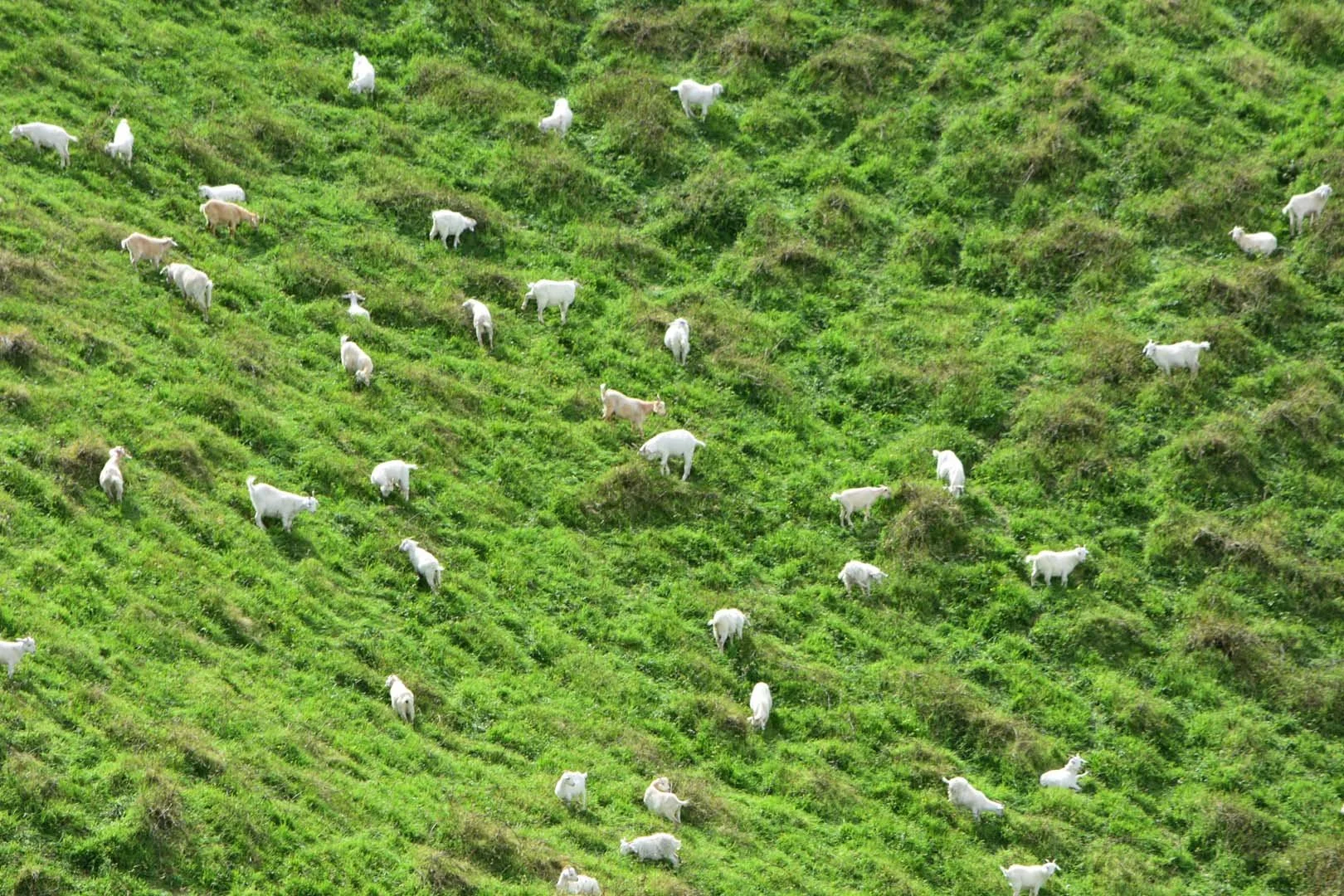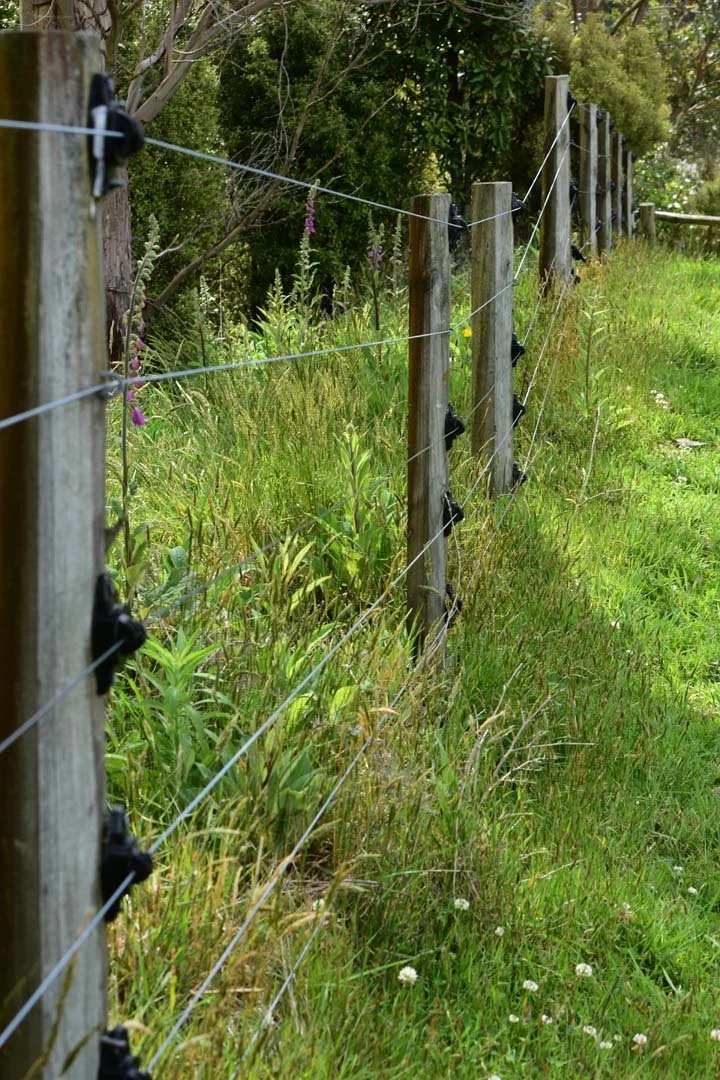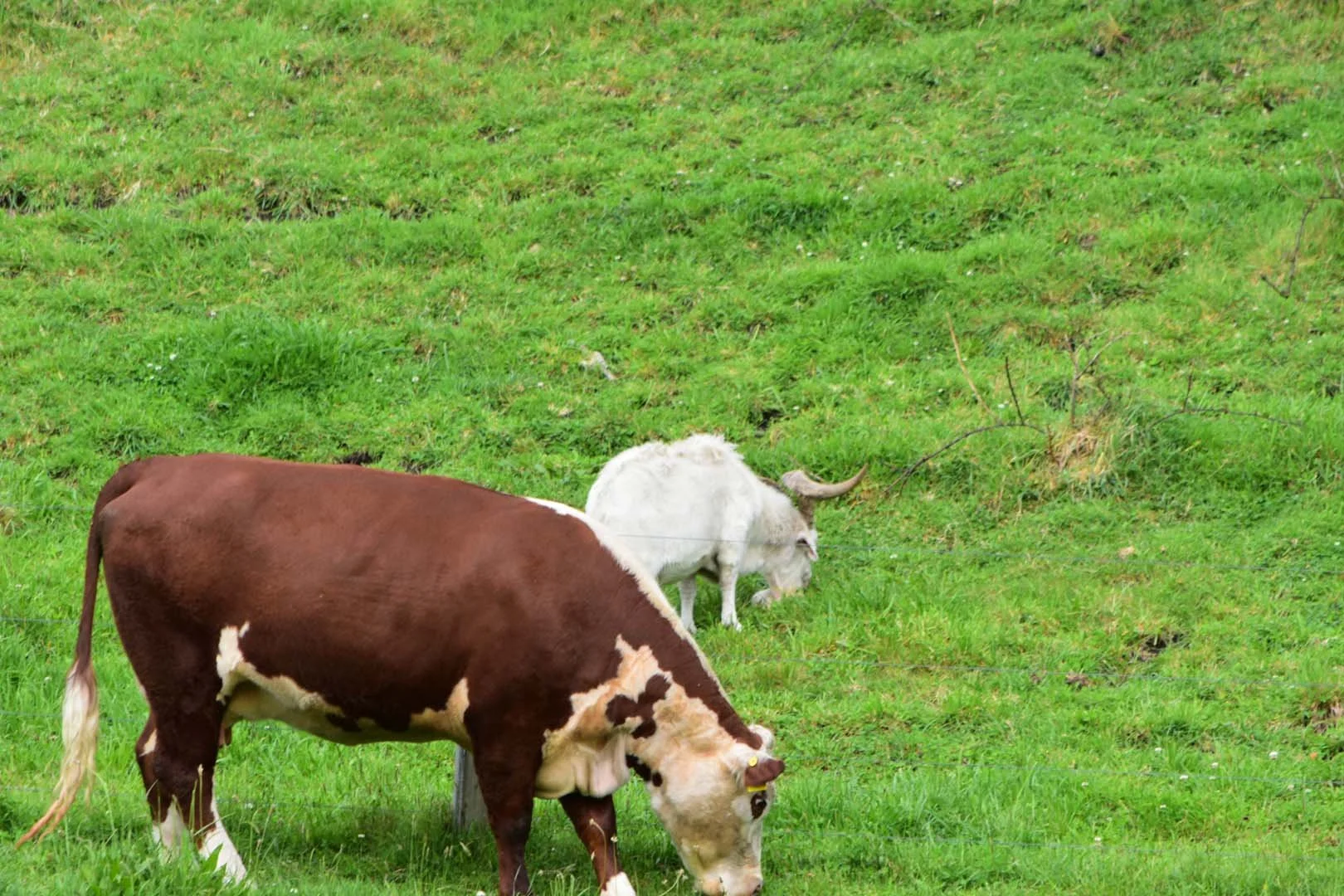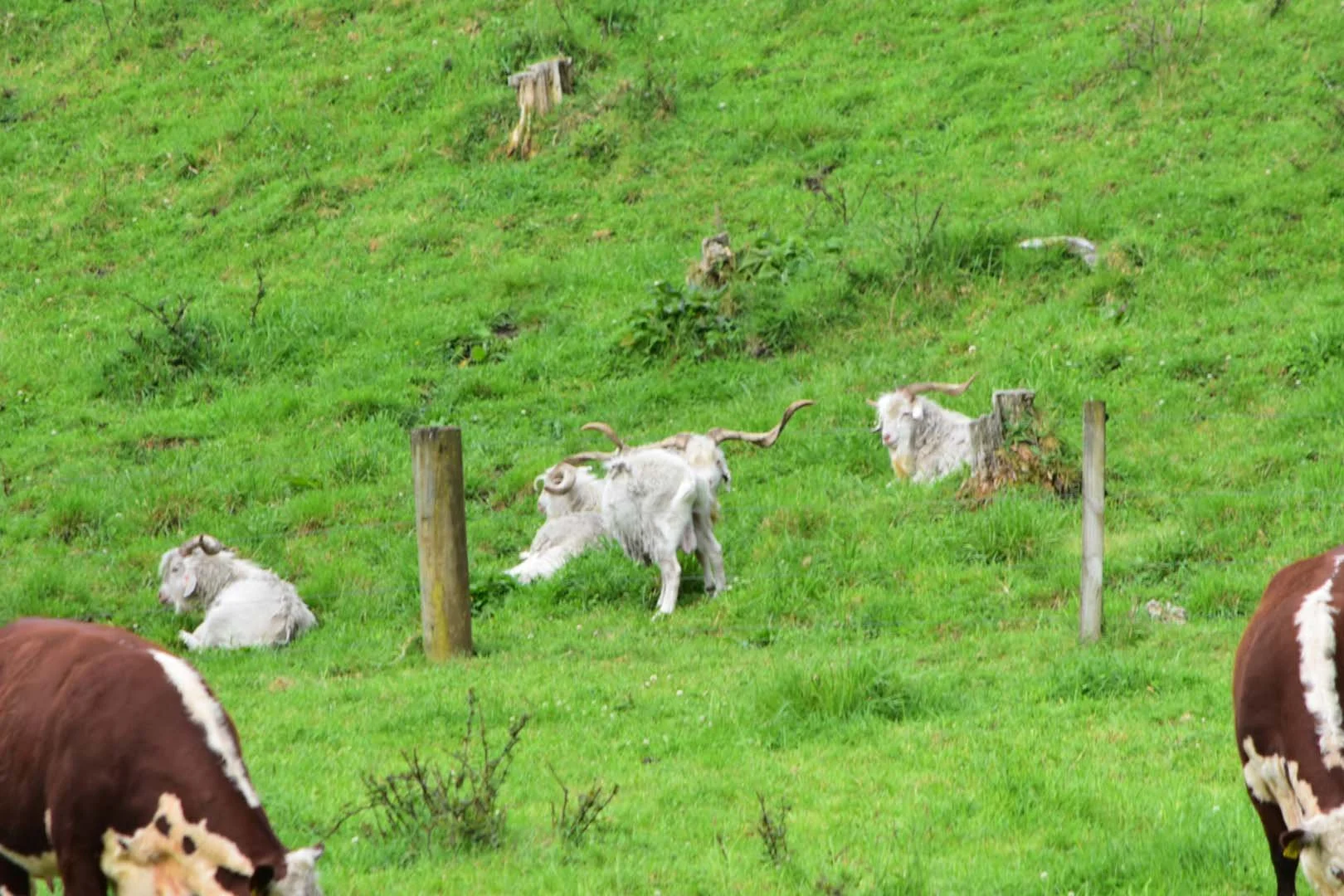
Goat army winning the battle against blackberry.
Blackberry and other weeds were an issue on Mark Bicknell and Gael Johnstone’s sheep & beef farm in the Eastern Bay of Plenty before they invested in a natural weed controller – Cashmere goats.
New Zealand Cashmere case study – Mark Bicknell
The Details:
Land:
Whakatane, Bay of Plenty, 160ha (130ha effective), plus two run-off blocks (35ha total)
10% flat, 70% rolling, remaining balance steep
Forestry conversion to productive Hereford cattle breeding operation.
Stock:
600 crossbred Cashmere goats, 60 Wiltshire sheep, 80 Hereford breeding cows, plus weaner bulls and R1 Hereford heifers. Weaner bulls wintered through to November
At kidding time, the goat flock rises to approximately 800 goats.
Sheep and beef farmer Mark Bicknell is enthusiastic about Cashmere goats and it’s not hard to understand why when you hear his story. Together with partner Gael Johnstone, the couple purchased the 160ha Mangaone Forest Farm from Carter Holt Harvey Forestry in 2005.
At the time of purchase, the former forestry block came with swathes of blackberry. While the blackberry was initially controlled with aerial spraying via helicopter, Mark says he always had in the back of his mind that establishing a herd of goats would help with weed control as he established a productive Hereford cattle breeding operation.
However, Mark initially didn’t purchase goats as he was concerned that he would need to upgrade fencing to control them. Instead, he started off with cattle, running 2 and 3 wire electric fencing.
“What transpired as I only farmed cattle for a while was the blackberry started to re-grow.”
In 2015, Mark purchased his first herd of goats. He started out running does with foundation (feral) genetics from a lifestyle block near Ōhope in the Bay of Plenty. These does were selected for their relatively quiet temperament.
He wasn’t running bucks until Hēpara Cashmere founder and South Otago farmer David Shaw got in touch about four years ago and suggested Cashmere bucks. From that point on Mark and Gael were on board with New Zealand Cashmere and they are currently running approximately 600 goats.
“I am ruing not getting started with the goats earlier as it turns out I didn’t need such substantial fencing to control them,” he says. “I soon realised that the goats weren’t that difficult to control as long as there were some electric wires on the fences. I set about upgrading the existing fences – some to 8 wire in big blocks, but mainly into 4 or 5 wire electric.”
Graze and walk away
All of the substantial weeds that Mark would have needed to spray, such as thistles, ragwort, and foxglove, have disappeared as the goats graze their way through the property.
“The goats have been super good at keeping the farm clear of those sort of weeds. All of the stuff that sheep don’t eat that we would have to spray on a sheep and beef farm.”
"If I put them in a paddock with blackberry and long grass, the bulk of them will eat the blackberry first as they prefer to eat with their heads up. When they do eat pasture, they graze it from the top down."
“The foxglove was a real surprise to me. I didn’t think they would eat that. I was concerned that would be a problem on our light soils as the soil gets opened up by the cattle (walking through) and the foxglove likes that.”
In addition, Mark says the goats are partial to Californian thistle when it reaches a certain browsable height.
The goats are so accustomed to the electric fencing that any weeds that are touching the fence lines don’t get grazed by the goats. Mark uses a gun and hose spraying apparatus to keep the fence lines clear of blackberry.
Mark says goats would be ideal in a beef finishing environment, or where a farmer wanted to avoid using chemical sprays.
Spraying was once a cost item of $150-$200 per hectare. By running goats instead, Mark says he has not only reduced costs, but has created an income item column in his accounts from goat sales.
He notes that goats improve the fertility of hilly fields as they graze the top of the hill first, leave their droppings and work their way down. This is in contrast to his cattle who graze at the bottom and work their way up hills.
Cattle and sheep’s feeding habits are “more-patchy”, whereas with goats, Mark has found that the grass level is more even, almost like a mown lawn.
As goats tend to camp in areas, he rotationally grazes them, using them to clean up and top pastures. “What I found a mob of goats was really good for, was the grazings on new grass. It almost looks like you’ve gone around the field with a mower.”
Through grazing, the goats have encouraged clover pasture, as well as plantain and herbs.
“In addition, as goats are relatively light on their feet this means less pasture damage compared to cows or 1 year old cattle.”
Simple systems for animal health
Mark’s goats are drenched only twice a year, in spring and autumn. He puts this down to running the herd only with cattle and due to the goat’s diet.
“They tend to be browsing rather than grazing low into the pasture which is where the parasite larvae is likely to be.”
Mark’s does start kidding in mid-October. He gives them a pre-kidding drench. “All the younger stock will get one as well.”
“In terms of farming, they have proven to be easier to farm and less work than sheep.”
“If you think you’re going to drench them like sheep it becomes a bit of a mission because you’ve got to get hold of each one by the horns. They pile up on top of each other in the drenching race. Rather than drenching them in a race, I drench them in a small docking pen.
“As the goats have been through the yards, they become easier and easier to handle. You don’t have to dip goats either.”
Breeding hardy goats
Mark is well on his way to breeding hardy goats. He currently has F1 goats with a small lot of F2 progeny.
F1 is a crossbred of foundation does with Cashmere bucks. The F2 kids have become predominately white or off-white. There are occasional caramel-coloured kids still present in the herd.
“As long as you have good Cashmere bucks, you predominantly end up with a white flock,” he says.
“Because I started off with feral does, they were pretty good feet-wise. That doesn’t seem to be changing at this stage with the F1s. I don’t have a foot bath and I look at their feet occasionally when they are in the yards. If I spot one limping, I’ll have a look at them.”
Mark says he hasn’t had many issues with footrot, despite the farm receiving five metres of rain over the past two years.
“The kids are very robust at kidding time. By the time the kids had been weaned last year, they had lived through over 2 metres of rain.”
Key learnings
Goats have a strong preference for plants they can browse on, overgrazing low into pastures – making them ideal for managing both weeds and rank grass.
They work well in a beef finishing system as they complement cattle, tackle weeds and lift pasture quality.
Mark suggests buying farmed goats as these tend to have quieter temperaments, or foundation feral goats which have been on-farm and are fence-trained and are used to being around humans.
Mark says as long as a farmer has good 8-wire batten fences, they probably wouldn’t have to put electric on all the fences.
His preference is to rotationally graze goats so they are used to being shifted, and this makes it much easier to muster and handle them in the yard.
Mark found goats will quickly learn when it is time to move paddocks. Mark only has to leave a gate open, call the goats and on his return will find most of them have shifted themselves – ‘much easier than sheep’.
For further information, please contact New Zealand Cashmere











